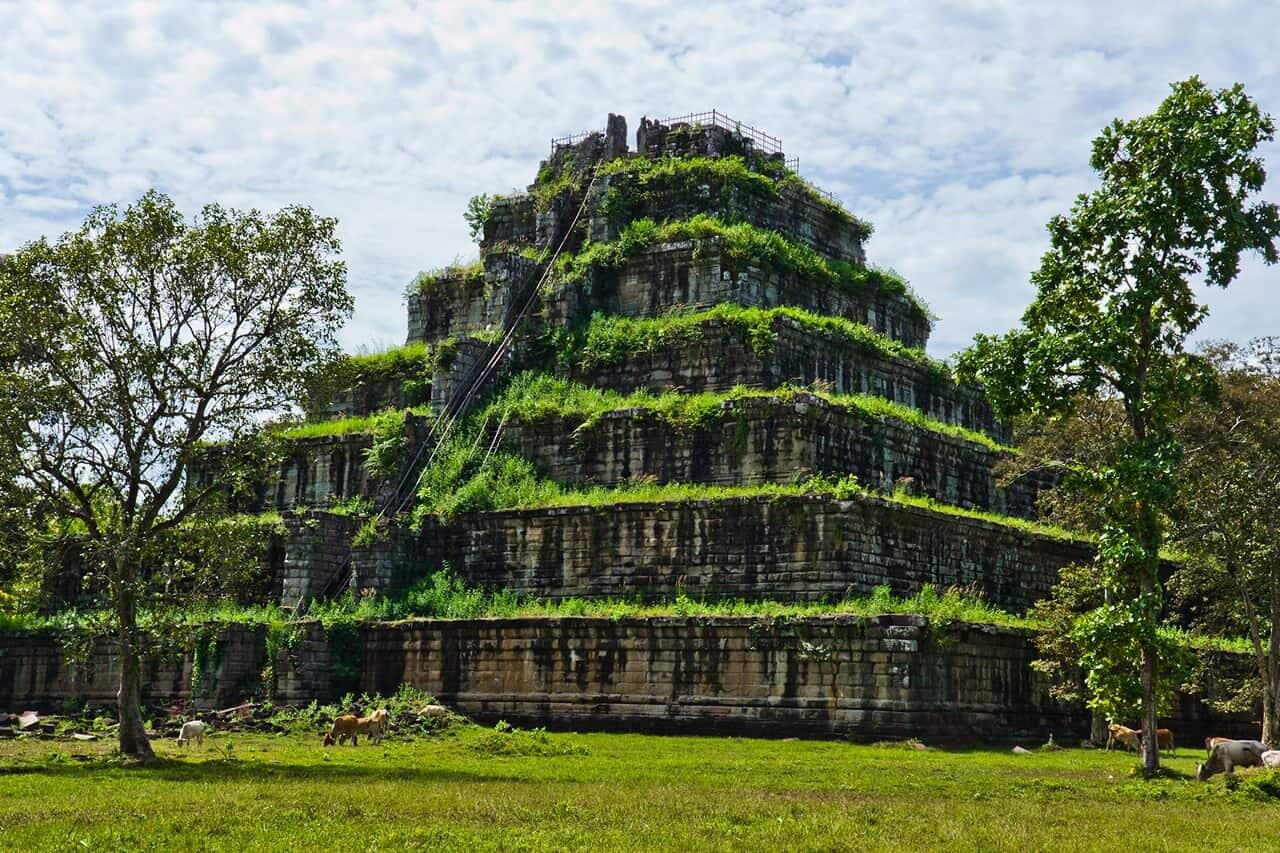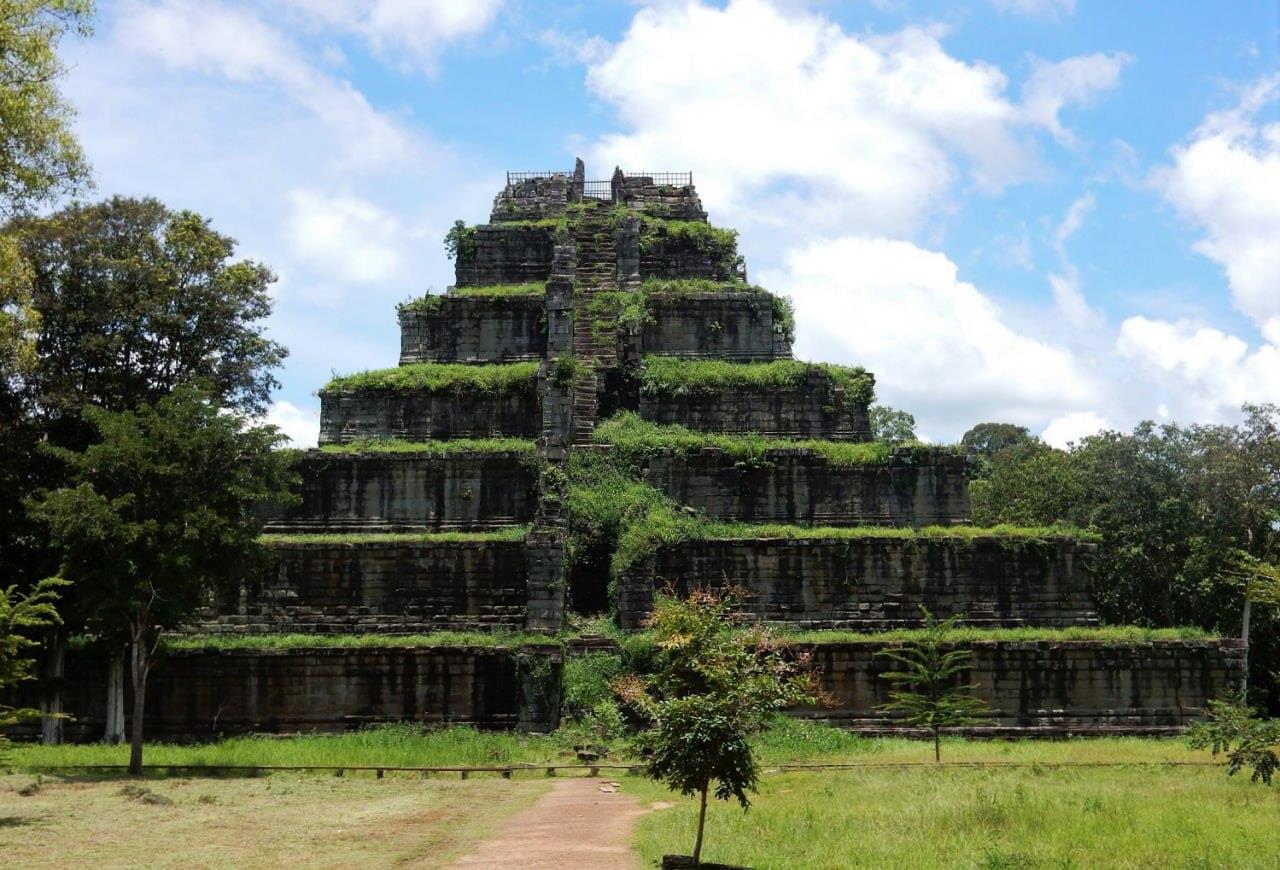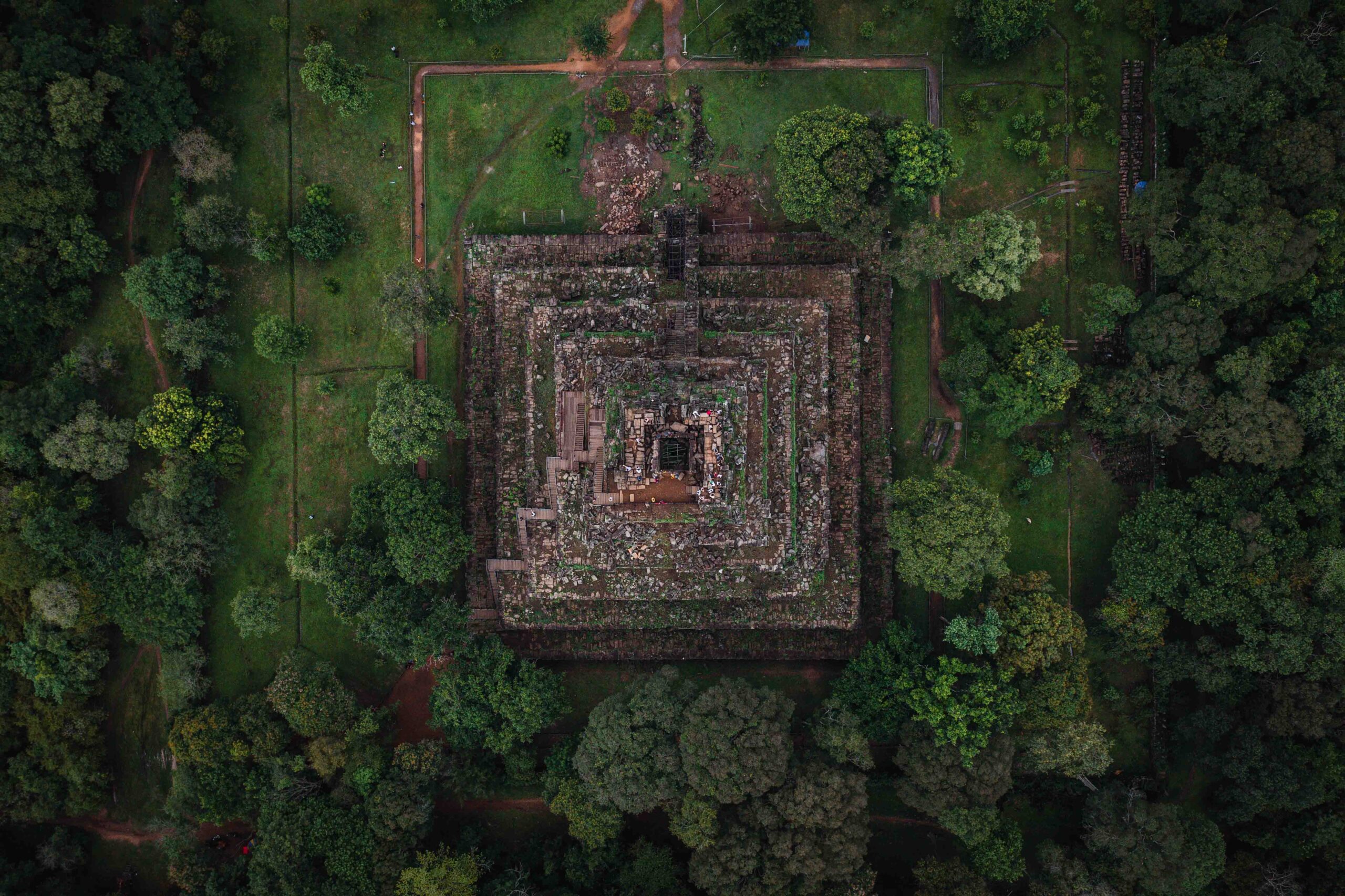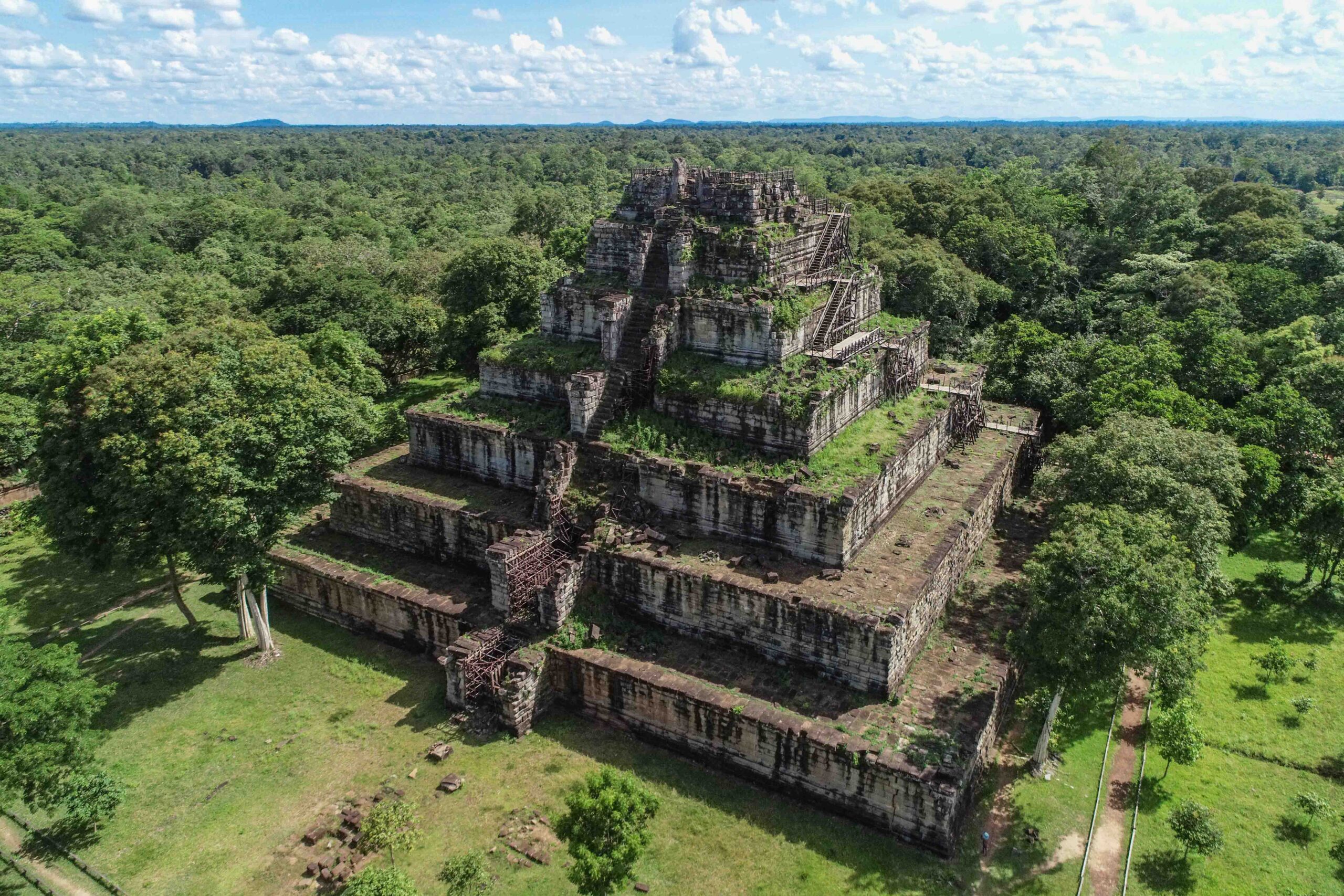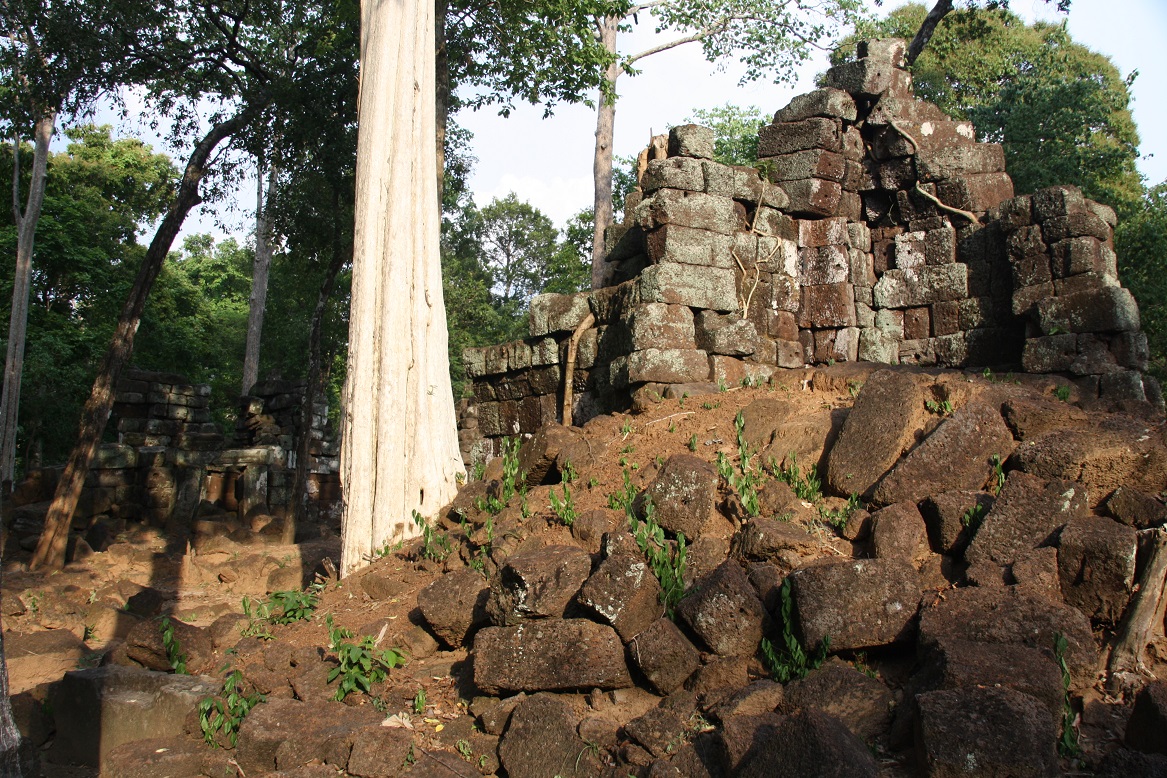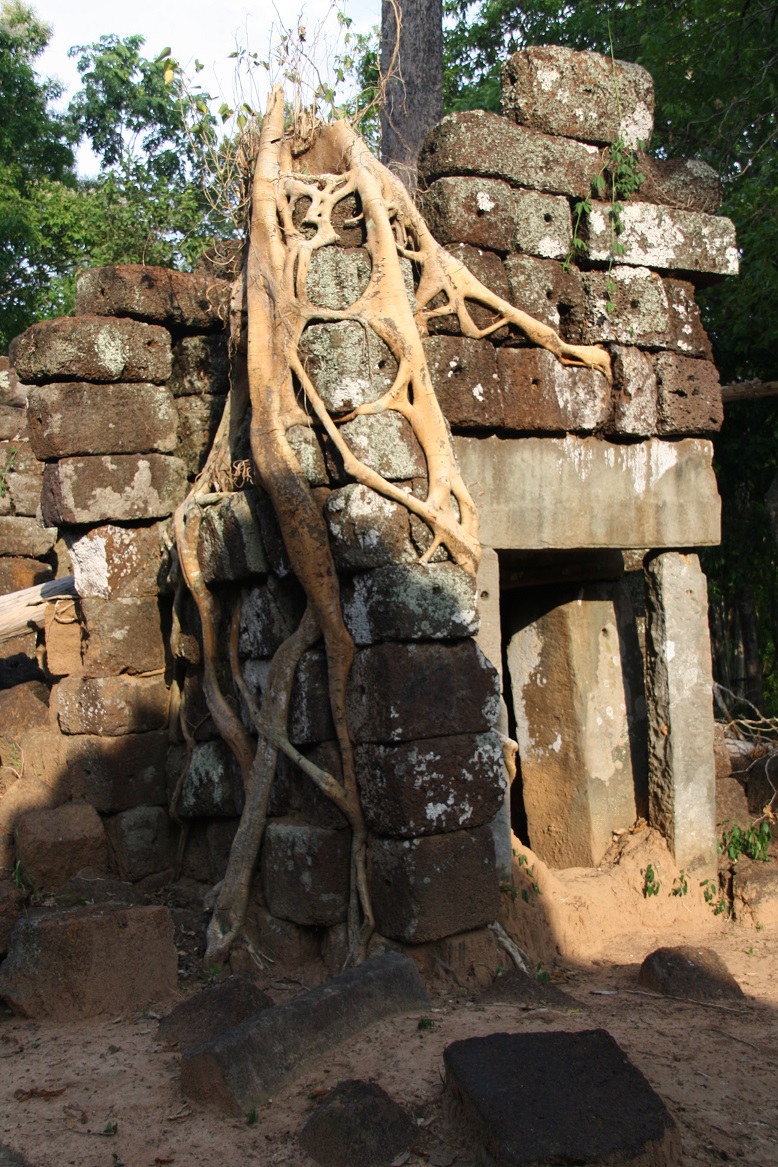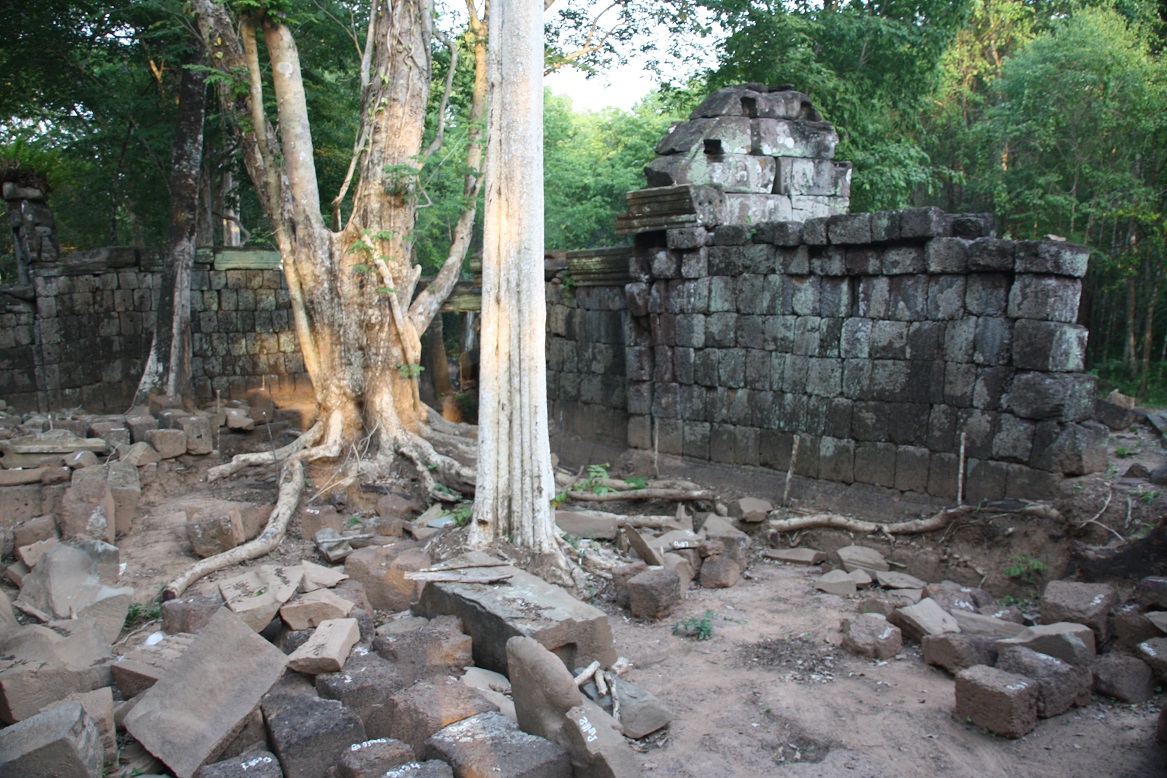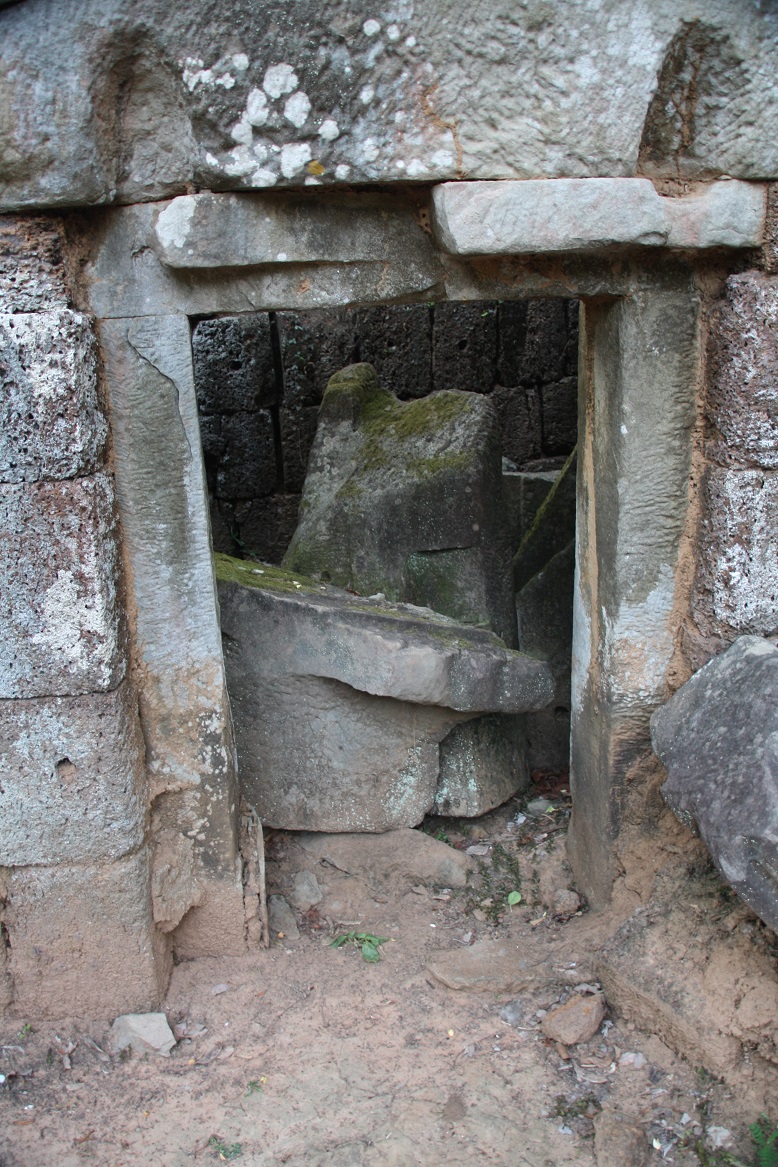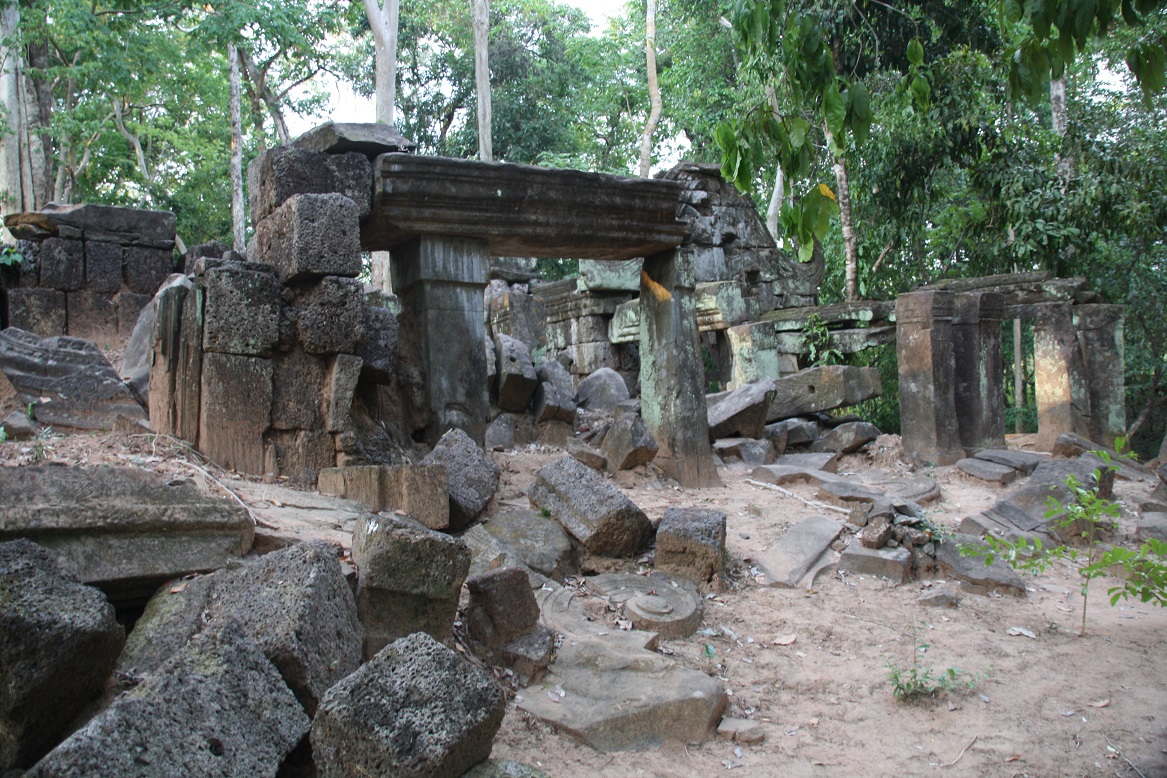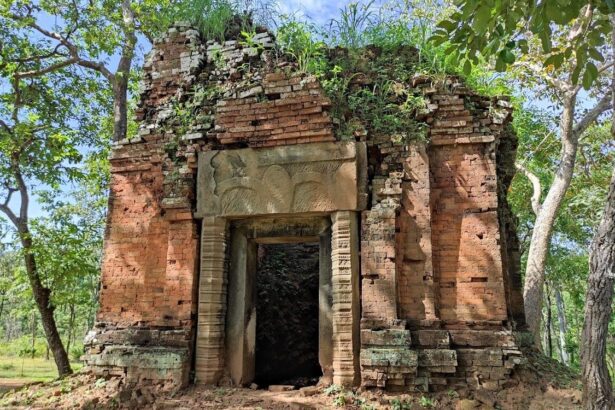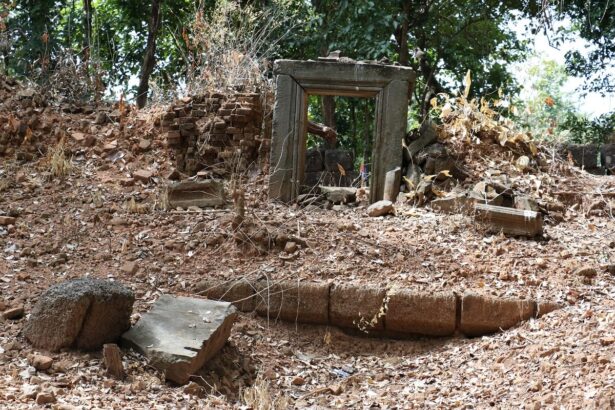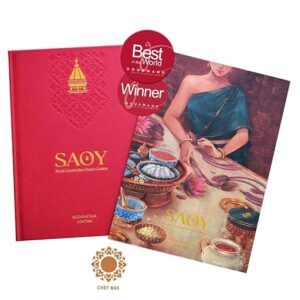Prasat Thom Complex (ក្រុមប្រាសាទធំ) is placed at the heart of Koh Ker and states as a landmark of the site. It is most imperative temple complex of Koh Ker site. The complex itself is divided into three distinct groups: First group is the main sanctuaries known as Prasat Kraham, Prasat Ruom surrounded by moat, Prasat Prang (the stepped pyramidal temple) and the tomb of the White elephant king. Second group is Prasat Srot with the central square. Third group is the Linga terrace with 5 Linga temples (namely, Prasat Balang Cheung, Prasat Thnoeng, Prasat Balang Tboung, Prasat Andoung Kuk, and Prasat Sralau) at the most east of this temple complex.
First Group
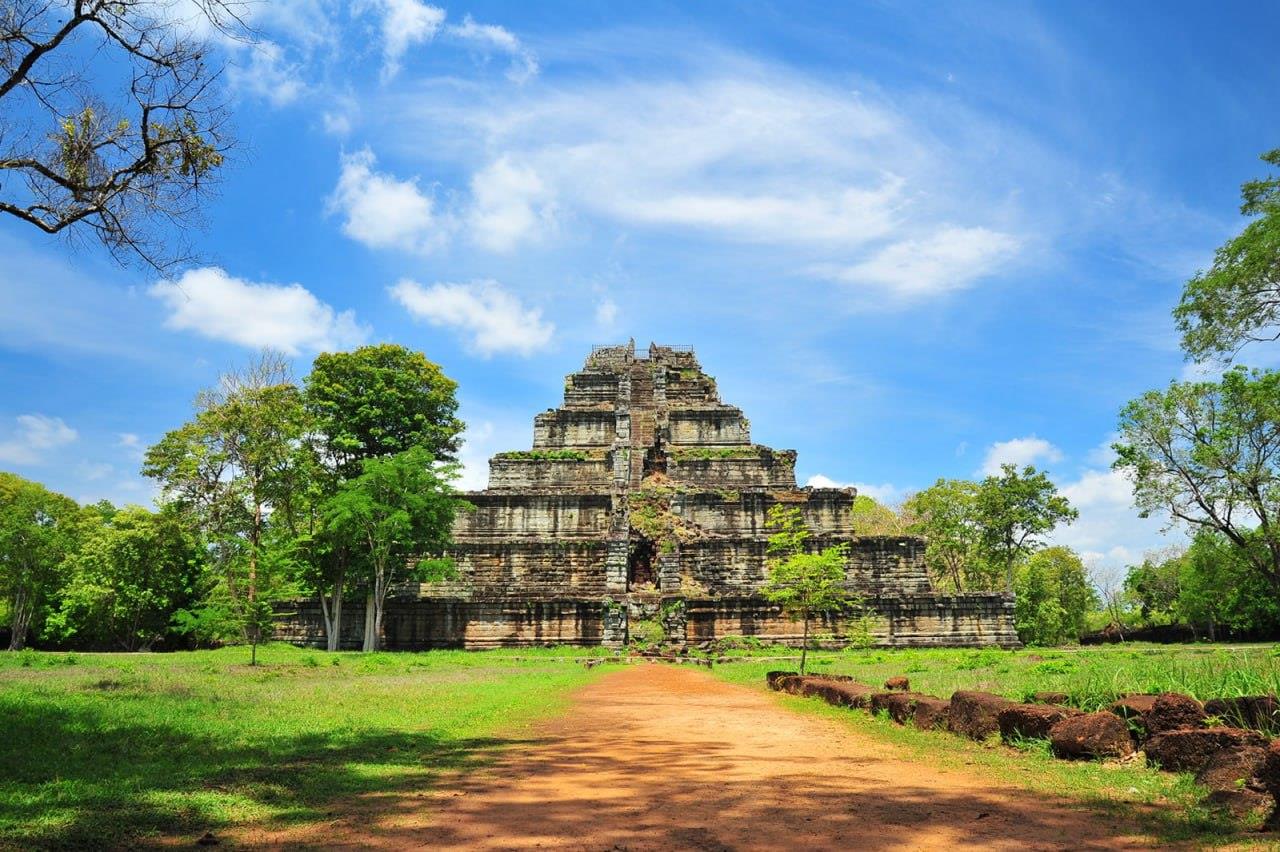
Prasat Prang (ប្រាសាទប្រាង): in 928 CE, Jayavarman IV became supreme “King of The Khmer Kings” and felt the need to build his own magnificent state pyramid-temple at Koh Ker. He commissioned what was to become the tallest Khmer temple-pyramid, its square base measuring some 62 by 62 meters and rising over seven-tiers to a 35-meter-high summit. This monument is presently known as “Prang”, but name is inappropriate and of obscure origin. Prasat Thom is thought to have been completed during the reign of Jayavarman IV and Prasat Prang was probably never actually completed. Prasat Prang rises alone and slightly west-center in the middle of a large area marked out by an enclosure rampart measuring 175 by 150 meters. Just west of Prasat Prang there is a enigmatic artificial mount known as Tomb of White elephant king.
Prasat Ruom (ប្រាសាទរួម) is situated in a rectangular enclosure and surrounded itself by many towers and other smaller monuments. It is just to the east of Prasat Thom. Built to dedicate the King’s Ancestors, it has 9 bricks towers all standing on one terrace. Attached to it are two brick libraries that are bounded by a moat and linked to each other by an east-west bridge. Moreover, there is the causeway that is situated between Prasat Kraham and Prasat Ruom with the Prasat Thom complex, measuring 35 meters by 22 meters. It features two balustrades and two Garuda statues standing at the end of Naga’s tails and a gallery that extends from Prasat Kraham to the Yama hall.
Prasat Kraham (ប្រាសាទក្រហម) is an enormous structure and the tallest among the temples in Koh Ker site. This temple acted as the gateway of Prasat Thom complex and its name is derived from the red brick used for construction with astonishing tapestry in its exterior. It is square in plan, and may be the biggest open space brick tower in Khmer architecture. Prasat Kraham’s lintels and single gate depict Vishnuite themes. According to Herry Parmentier (1936), it presented “two warriors vying for an unrecognizable object”, although it could be an elephant head whose ears can be seen between the two warriors. Prasat Kraham housed a huge dancing Shiva, 5-meter-high and 3-meter-widht and weighs around 7 tons, on a pedestal decorated with a snake-scaled carved torus, and a succession of vegetal friezes supported by burden-hearing lions. There are four other statues located at each corner – Dancing Uma, Chamuda, Mahakala, Nandykeshvara.
Tomb of the White Elephant: A large conical shaped mound sits behind the seven‑tiered pyramid is an artificial hill of exact circle form covered with trees. It is named Tomb of the White elephant. “The white Elephant” is a very well-known legend in southeast Asia. There are different theories about the hill. Some say that this structure could be the foundation of a second pyramid. Others say that it could be the grave of Jayavarman IV. The steep path leading to the top of the hill is closed now because of security reasons.
Second Group
Prasat Srot or Srot Temple (ប្រាសាទស្រុត): Built in 10th century during the King Jayavarman IV, A pair of sandstone structures located outside the perimeter of Prasat Thom (Koh Ker) and considered part of the same complex. This ruin is located somewhat far away from the main cluster of structures at Prasat Thom, and the locals refer to it as Prasat Srot. The site is sometimes referred to as Preah Ponhea or Palais. The temple is made of sandstone and laterite in Koh Ker Style, dedicated to Hinduism (Shiva).
Third Group
Linga Terrace: Lie on a north-south-axis, five shrines recorded only as Prasat Balang Cheung or Prasat Linga II (ប្រាសាទបាល្ល័ង្គជើង ឬប្រាសាទលិង្គ២), Prasat Thnoeng or Prasat Linga I (ប្រាសាទថ្នឹង ឬប្រាសាទលិង្គ១), Prasat Balang Tboung (ប្រាសាទបាល្ល័ង្គត្បូង ឬប្រាសាទលិង្គ៣), Prasat Andoung Kuk (ប្រាសាទអណ្តូងគោក ឬប្រាសាទលិង្គ៤), and Prasat Sralau (ប្រាសាទស្រឡៅ) perfectly perpendicular the great temple of Prasat Thom, and parted by a large square water tank, built of sandstone. Several pottery shards and roof tiles were discovered in trail pits on the site. The carvings at the Balang Cheung Temple show further refinement on the door frames and colonettes, and the linga is placed on a pedestal made of a single piece of stone, with an exquisite design, decorated with lions facing the eight directions. The four linga temples were built without a roof over them, in order to receive the rain that flows through the linga, becoming sacred water and continuing to flow into the square-shaped reservoir in front. This group of linga temples may represent the four sacred rivers according to Indian mythology.
- Linga I Temple or Prasat Linga I or Prasat Thnoeng (ប្រាសាទលិង្គ១ ឬប្រាសាទថ្នឹង): The temple is located 1 km north of the northeast corner, 500 meters northwest of Koh Ker village and about 100 meters north of Balang Cheung temple. Orientation to the west, this single sandstone temple with a massive Shiva Linga built in Koh Ker style during the Reign of King Jayavarman IV. Although no inscription of the temple is available, it is believed that the three towers (Linga I, Linga II, and Linga III) may have been symbolic of the Trinity. This temple has square plan, 9.7 meters long. The pedestal among the three Linga temples, we see that the pedestal of the Prasat Thnoeng (Linga I Temple) is the smallest, with 3.2 meters square and 3.8 meters high.
- Linga II Temple or Prasat Linga II or Prasat Balang Cheung (ប្រាសាទលិង្គ២ ឬប្រាសាទបាល្ល័ង្គជើង): The temple is in the Koh Ker Style, made of sandstone. The temple is dedicated the Brahman god Shiva. The shape of the temple is like a tower with a very artistic design. The decoration of Prasat Balang Cheung expresses its exceptional grandeur through its elaborate doorjambs, lintels and colonettes. It comprises a gigantic Linga made with monolith stones placed on a highly ornate pedestal held by lion facing in the eight cardinal and ordinal directions. In the area of this temple, there is a Shiva Linga, which is being preserved.
- Linga III Temple or Prasat Linga III or Prasat Balang Tboung (ប្រាសាទលិង្គ៣ ឬប្រាសាទបាល្ល័ង្គត្បូង): it is one of significant temple of the four linga temples of Koh Ker (including: Thnoeng Temple, Balang Cheung Temple, and Andoung Kuk). Prasat Balang Thboung is pedestal lies at perfect axial alignment with Prasat Thom. It is a single temple structure built along the west-east axis and east of the main temple (Prasat Thom or Prasat Prang). According to the study, we found only the collection of pedestals, measuring 2.85 meters square and 2.2 meters high, and the Shiva Linga, measuring 0.76 meters in diameter and 2.3 meters high. There was no footprint of the roof.
- Linga IV Temple or Prasat Linga IV or Prasat Andoung Kuk (ប្រាសាទលិង្គ៤ ឬប្រាសាទអណ្តូងគោក): The temple has a single, quadrangular tower made of sandstone, facing southwest, facing the terrace and adorned with false doors at the other corners. The temple has a laterite wall and a laterite gate located more than 30 meters southwest of the temple. Andoung Kuk or the Linga III temple has the largest pedestal, measuring 4.5 meters square and 4.8 meters high. Due to the size, Mr. Jules Harmand, who believed that these pedestals were carved out of natural stone. While, Mr. Étienne François Aymonier and Mr. Hemri Parmentier agreed with Jules Harmand. Mr. Étienne François Aymonier added that the location of this natural stone was placed incorrectly, facing the direction of the Thom Temple or Prang Temple. However, this idea is very difficult to accept, as the natural location and appearance, the clearing of the soil from the towers and temples confirm the relationship between the pedestal and the rock location.
- Sralau Temple (ប្រាសាទស្រឡៅ): Near the northeast corner of the Rahal, it is a particularly curious monument that seems to have been mixed using existing blocks (mostly laterite) either in location or nearby areas. The monument is lined southwest with the nearby Krachap and Andong Kuk temples and has a ruined central ruined tower, library and gopura entrance fenced within a laterite rampart. Until further archaeological excavations at the site, its original layout and date remain a mystery. There has been some speculation that the ruined temple may have been one of Jayavarman VII Hospital or Arogyasala, which he built throughout the country during his reign. The layout, materials, and structures visible appear to be consistent with other surviving Arogyasalas, which typically have a central laterite temple, a small library in the southeast corner, surrounded by a laterite enclosure with an east entrance pavilion, and a man-made reservoir farther east. Prasat Sarlau is seen today as a chapel of hospital constructed during the reign of Jayavarman VII in 12th century A.D. by reusing stones and on the foundation of a previous temple structure (the fifth Linga temple), built during the reign of Jayavarman IV in 10th century A.D. Based on its alignment and symmetrical position with other four Linga temples, this temple could be considered as the 5th Linga temple. This temple first dedicated to Hinduism (Shiva God) and lately to Buddhism (Lokesvara), in Koh Ker and Bayon style, respectively.
- The decoration of Prasat Balang Cheung expresses its exceptional grandeur through its elaborate doorjambs, lintels and colonettes. It comprises a gigantic Linga made with monolith stones placed on a highly ornate pedestal held by lion facing in the eight cardinal and ordinal directions.
- Prasat Balang Thboung is pedestal lies at perfect axial alignment with Prasat Thom.
- Prasat Sarlau is seen today as a chapel of hospital constructed during the reign of Jayavarman VII in 13th century C.E. by reusing stones and on the foundation of a previous temple structure (the fifth Linga temple). Based on its alignment and symmetrical position with other four Linga temples, this temple could be considered as the 5th Linga temple.
- It is believed that these four temples (Linga I, Linga II, Linga III and Linga IV temples) are purposely built without any roof to allow the rainwater to be sanctified by flowing over their Lingas into the ceremonial square reservoir in front. This group of Linga temples may represent the four sacred rivers in Indian myth.
Gallery

